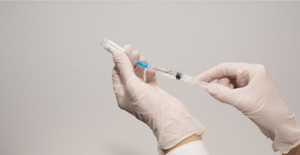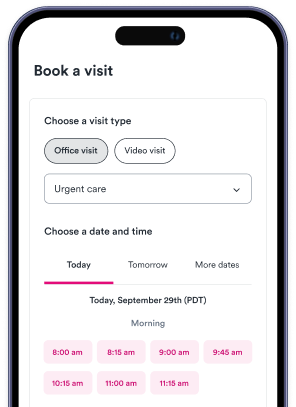Key points
- Anemia is a common blood disorder where the body lacks sufficient healthy red blood cells to efficiently transport oxygen, leading to symptoms ranging from mild fatigue to severe complications.
- Anemia can be caused by nutritional deficiencies, chronic diseases, genetic conditions, or blood loss, and requires different treatment approaches depending on its type.
- The most common types of anemia include iron deficiency anemia, vitamin deficiency anemia, anemia of inflammation, aplastic anemia, hemolytic anemia, sickle cell anemia, and thalassemia.
- Treatment options for anemia range from dietary supplements and changes, medications, blood transfusions, to stem cell transplants, depending on the severity and type of anemia.

Anemia is a common blood disorder that occurs when the body lacks enough healthy red blood cells to carry oxygen efficiently. Its symptoms can range from mild fatigue and weakness to severe complications that may become life-threatening if left untreated.
Anemia can stem from various causes, including nutritional deficiencies, chronic diseases or genetic conditions, and it comes in multiple forms, each requiring specific treatment approaches. Read on to explore the different types of anemia, their underlying causes and the available treatment options to help manage and prevent this condition.
What is anemia?
Anemia happens when your body doesn’t have enough red blood cells or when those cells aren’t working properly, according to the National Library of Medicine. Since red blood cells carry oxygen to every part of your body, anemia can leave you feeling tired, weak and short of breath. Some cases are mild and barely noticeable, while others can be severe and even life-threatening.
Red blood cells play a crucial role in keeping your body running. They contain a protein called hemoglobin, which grabs oxygen from the lungs and delivers it to tissues and organs. Without enough healthy red blood cells, your body doesn’t get the oxygen it needs, making everyday activities feel exhausting. Anemia can also cause dizziness, pale skin and even heart problems in more serious cases.
Anemia is one of the most common blood disorders, affecting millions of people worldwide. It can develop from a lack of essential nutrients like iron, vitamin B12, or folic acid, as well as chronic illnesses, genetic conditions or blood loss. While some forms of anemia are temporary and easily treated, others require long-term care, according to the National Library of Medicine.
Types of anemia and their causes
Not all anemia is the same—there are different types, each with its own cause. Some happen because the body isn’t getting enough nutrients, while others result from diseases, genetic conditions or even problems with the bone marrow. No matter the cause, all forms of anemia reduce the body’s ability to carry oxygen, leading to fatigue and other health problems. Below are some common types of anemia and what causes them, according to the National Library of Medicine:
- Iron deficiency anemia: This is the most common type of anemia and happens when the body doesn’t have enough iron to make hemoglobin. Without enough iron, red blood cells can’t carry enough oxygen. This can result from blood loss (such as heavy periods or internal bleeding), a poor diet or trouble absorbing iron from food.
- Vitamin deficiency anemia: The body needs certain vitamins, like B12 and folic acid, to produce healthy red blood cells. A lack of these vitamins, often due to poor diet or absorption problems, can lead to anemia. Some people may also have conditions like pernicious anemia which prevents the body from absorbing vitamin B12 properly.
- Anemia of inflammation: Also known as anemia of chronic disease, this type occurs when long-term illnesses—such as infections, cancer, kidney disease or autoimmune disorders—interfere with red blood cell production. The body may also trap iron in storage, making it unavailable for making new blood cells.
- Aplastic anemia: A rare but serious condition, aplastic anemia happens when the bone marrow stops producing enough red blood cells. It can be caused by infections, exposure to toxic chemicals, radiation or autoimmune diseases, where the body mistakenly attacks its own bone marrow.
- Hemolytic anemia: In this type of anemia, red blood cells are destroyed faster than they can be replaced. It can be caused by inherited conditions like sickle cell disease, autoimmune disorders, infections or reactions to certain medications. When red blood cells break down too quickly, it can lead to severe fatigue, jaundice (yellowing of the skin) and an enlarged spleen.
- Sickle cell anemia: This is a genetic form of anemia where red blood cells are shaped like sickles or crescents instead of being round. These misshapen cells can get stuck in blood vessels, blocking oxygen flow and causing severe pain, organ damage and other complications. Sickle cell anemia mostly affects people of African, Mediterranean, Middle Eastern and Indian descent.
- Thalassemia: Another inherited form of anemia, thalassemia, occurs when the body doesn’t produce enough hemoglobin. This leads to fewer and smaller red blood cells. The severity of thalassemia can range from mild to life-threatening, depending on the specific genetic mutation.
Some types can be managed with diet changes or supplements, while others may require medications, blood transfusions or more advanced treatments. This is why understanding the different types of anemia and their causes is important for proper diagnosis and treatment.
Anemia symptoms
Anemia can sneak up on you, starting with small signs that are easy to ignore. Many people don’t even realize they have it until their symptoms get worse. Because anemia affects how much oxygen your blood carries, it can impact everything from your energy levels to your heart and brain. Some symptoms are mild, while others can be severe and even dangerous if left untreated. Below are some of the most common signs of anemia, according to the National Library of Medicine:
- Tiredness (fatigue) – Feeling unusually exhausted, even after a full night’s sleep, is one of the most common signs of anemia. Your body isn’t getting enough oxygen, making it harder to stay energized.
- Weakness – Muscles need oxygen to work properly. Without enough red blood cells, you may feel weaker than usual, even when doing simple tasks.
- Shortness of breath – If you find yourself getting out of breath easily, even from light activity, it could be a sign of anemia. Your body tries to compensate for low oxygen levels by making you breathe faster.
- Pale or yellowish skin – Healthy red blood cells give your skin a natural pinkish tone. When you don’t have enough, your skin may look pale or in some cases, yellowish due to red blood cell breakdown.
- Irregular heartbeat (palpitations) – Anemia makes the heart work harder to pump oxygen-rich blood. This can lead to an irregular, fast or pounding heartbeat—and, in severe cases, heart problems.
- Dizziness or lightheadedness – Low oxygen levels can make it harder for your brain to function properly, leading to dizziness, trouble concentrating or even fainting.
- Chest pain – In severe cases, anemia can strain the heart, leading to chest pain, especially in people with existing heart conditions. This symptom should never be ignored.
- Cold hands and feet – Poor circulation due to anemia can make your extremities feel unusually cold, even in warm weather.
- Headaches – A lack of oxygen to the brain can trigger frequent or severe headaches, making it harder to focus or get through daily tasks.
- Complete blood count (CBC) – This is the most common test for anemia. It measures different parts of your blood, including red blood cells, white blood cells, platelets, hemoglobin and hematocrit. A CBC can help detect anemia and give clues about its cause.
- Hemoglobin test – This test specifically measures the amount of hemoglobin in your blood. Since hemoglobin carries oxygen, low levels indicate anemia and help doctors determine how severe it is.
- Hematocrit test – This test measures the percentage of your blood that is made up of red blood cells. A low hematocrit level suggests anemia, while a high level might indicate other health issues.
- Peripheral blood smear – In this test, a drop of blood is examined under a microscope to check the size, shape and number of red blood cells. It can help doctors identify specific types of anemia, such as sickle cell anemia or vitamin deficiency anemia.
- Iron and vitamin tests – Since some types of anemia are caused by a lack of iron, vitamin B12 or folic acid, doctors may order tests to measure these levels in your blood. If you have a deficiency, supplements or dietary changes may be recommended.
- Dietary supplements – If anemia is caused by a lack of iron, vitamin B12 or folic acid, doctors often recommend supplements. These help restore healthy levels of essential nutrients and improve red blood cell production.
- Medications – Some types of anemia, such as anemia of inflammation, may require medications to treat the underlying condition. In cases of severe anemia, doctors may also prescribe drugs that help stimulate red blood cell production in the bone marrow.
- Blood transfusion – For people with severe anemia, especially those with blood loss or certain genetic conditions, a blood transfusion may be necessary. This process involves receiving healthy red blood cells from a donor to quickly increase oxygen levels in the body.
- Stem cell (bone marrow) transplant – In rare cases of severe anemia, such as aplastic anemia, a stem cell transplant may be needed. This procedure replaces damaged bone marrow with healthy stem cells to restore red blood cell production.
- Dietary changes – Eating a balanced diet rich in iron (found in red meat, leafy greens and beans), vitamin B12 (in fish, eggs and dairy), and folic acid (in fruits and whole grains) can help prevent and manage some types of anemia.
While some cases of anemia are mild and easy to treat, others can be a sign of more serious health conditions. If you experience several of these symptoms, especially over a long period, it’s important to see a doctor.
How is anemia diagnosed?
Since anemia symptoms can be similar to those of other health problems, doctors use blood tests to confirm the diagnosis. These tests help determine if you have anemia, what type it is and how severe it may be. By measuring different components of your blood, doctors can figure out whether you need simple treatments like dietary changes or more advanced medical care. Here are some of the most common tests for diagnosing anemia:
Mild and severe anemia treatment options
The right treatment for anemia depends on its cause and severity, according to the National Library of Medicine. Mild cases can often be managed with simple changes like eating iron-rich foods or taking supplements, while severe anemia may require more advanced medical treatments. The goal is to boost red blood cell production, improve oxygen flow and address any underlying health issues. Below are some common treatment options for anemia, according to the National Library of Medicine:
It’s important to note that the best treatment plan depends on the type of anemia and how serious it is.
When to see a doctor for severe anemia
Anemia isn’t always just a minor inconvenience — severe cases can be life-threatening if left untreated. The National Library of Medicine explains that when your body doesn’t get enough oxygen, it can put extra stress on your heart and other organs, leading to serious complications. While mild anemia can often be managed with diet and supplements, severe anemia requires medical attention to prevent long-term damage.
The National Library of Medicine also notes that you should see a doctor if you experience extreme fatigue, dizziness, shortness of breath or a rapid or irregular heartbeat. Chest pain, fainting or pale or yellowish skin are also warning signs that your anemia may be getting worse. If you have an underlying condition like kidney disease, cancer or an autoimmune disorder, regular check-ups are important to monitor your blood health.
In some cases, sudden or severe symptoms — such as chest pain, trouble breathing or confusion — could signal a medical emergency. If you or someone you know experiences these symptoms, seek immediate medical care. Anemia may start off mild, but if left unchecked, it can become dangerous.
Lab tests near me
Use Solv to find lab tests near you.
FAQs
What is anemia and what are its symptoms?
Anemia is a blood disorder that occurs when the body lacks enough healthy red blood cells to carry oxygen efficiently. Symptoms can range from mild fatigue and weakness to severe complications that may become life-threatening if left untreated. Other symptoms include dizziness, pale skin, and even heart problems in more serious cases.
What are the different types of anemia and their causes?
Anemia can be caused by various factors including nutritional deficiencies, chronic diseases, or genetic conditions. Some common types of anemia include iron deficiency anemia, vitamin deficiency anemia, anemia of inflammation, aplastic anemia, hemolytic anemia, sickle cell anemia, and thalassemia. Each type has a different cause, ranging from lack of essential nutrients like iron, vitamin B12, or folic acid, to chronic illnesses, genetic conditions, or blood loss.
How is anemia diagnosed?
Anemia is diagnosed through blood tests which help determine if you have anemia, what type it is, and how severe it may be. These tests include a complete blood count (CBC), hemoglobin test, hematocrit test, peripheral blood smear, and iron and vitamin tests.
What are the treatment options for mild and severe anemia?
The treatment for anemia depends on its cause and severity. Mild cases can often be managed with simple changes like eating iron-rich foods or taking supplements. Severe anemia may require more advanced medical treatments such as medications, blood transfusions, or stem cell transplants.
When is it necessary to see a doctor for severe anemia?
It's necessary to see a doctor for severe anemia if you experience extreme fatigue, dizziness, shortness of breath, or a rapid or irregular heartbeat. Chest pain, fainting, or pale or yellowish skin are also warning signs that your anemia may be getting worse. In some cases, sudden or severe symptoms could signal a medical emergency and immediate medical care should be sought.









